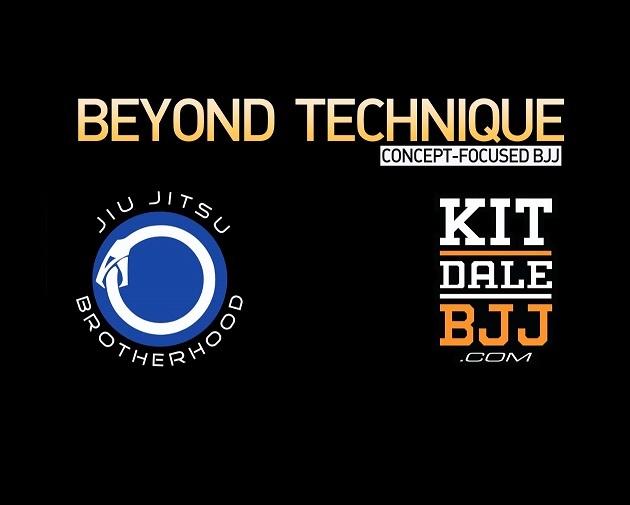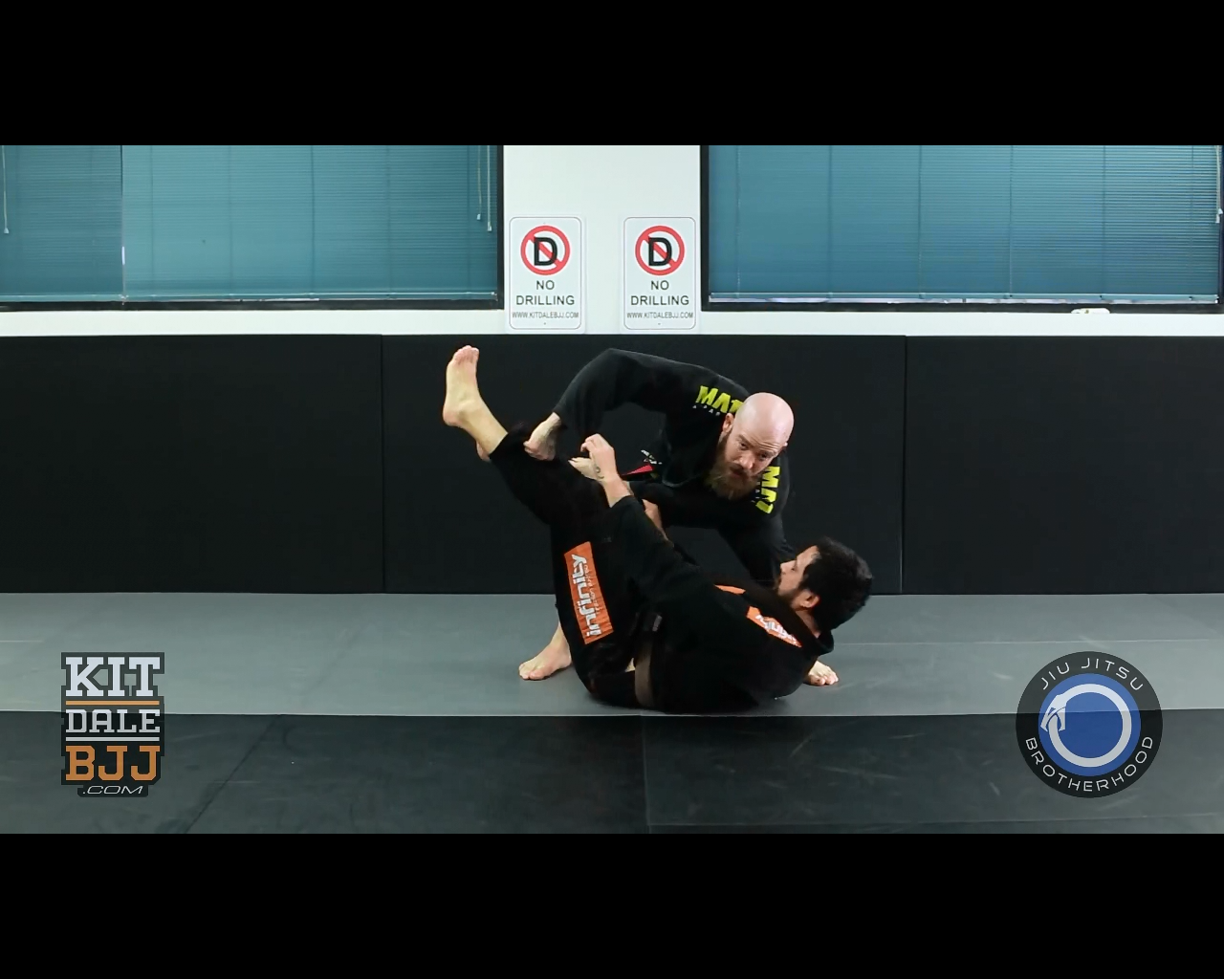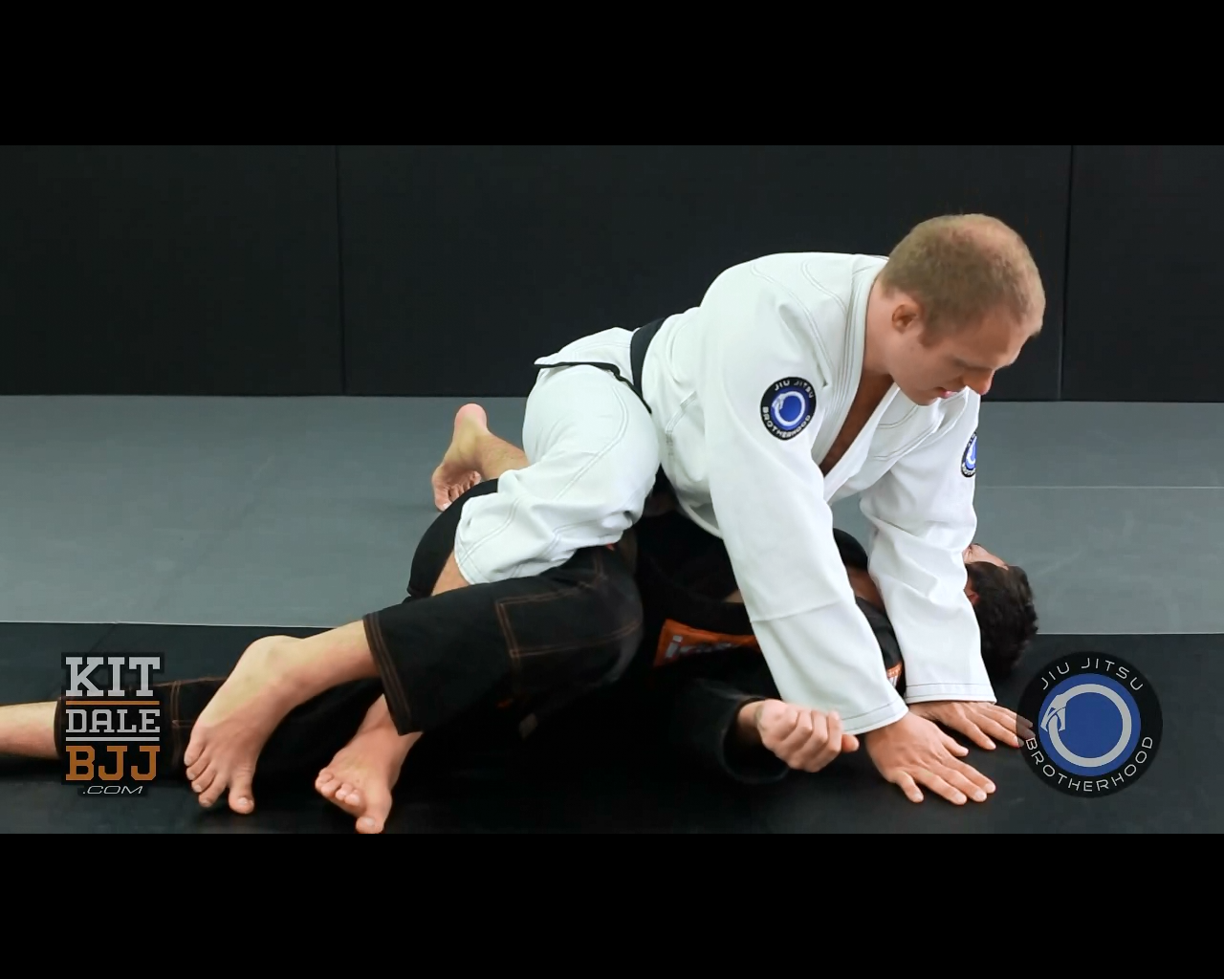So let’s start! These are the steps you can take to more effectively benefit from Beyond Technique:
- Teach the concepts.
- Find technical applications.
- Focus on one concept.
Teach the Concepts
“Learning jiu-jitsu is something for the subconscious, not for the consciousness.” – Helio Gracie
“Learning jiu-jitsu is something for the subconscious, not for the consciousness.” – Helio Gracie
Every time you explain a concept in your own words, you learn it at a deeper level. That process increases the probability that you will discover creative applications because it transfers knowledge to the subconscious.
With that in mind, it would be helpful for you to imagine that you are trying to explain each concept to a novice of the art. You should envision yourself as a mentor and ask yourself what is the best method of passing the knowledge on.
Find Technical Applications
“Creativity is just connecting things. When you ask creative people how they did something, they feel a little guilty because they didn’t really do it, they just saw something. It seemed obvious to them after a while.” – Steve Jobs
“Creativity is just connecting things. When you ask creative people how they did something, they feel a little guilty because they didn’t really do it, they just saw something. It seemed obvious to them after a while.” – Steve Jobs
If you can connect concepts to techniques you already know, it will strengthen your level of understanding in an instant. It will also make the concept easier to remember while also making the technique easier to explain.
There is also a benefit when it comes to learning new technique because if you already know the concept, you already have a foundation that will help you master the rest. So for each concept, find at least one application that is different than what was shown in Beyond Technique.
Focus on One Concept
“From one thing, know ten thousand things.” – Miyamoto Musashi
“From one thing, know ten thousand things.” – Miyamoto Musashi
It is better to specialize than generalize, and if you focus on delving deeper on just one concept, it’s more likely that you will quickly find a creative application of it. So choose one of the twenty concepts discussed in Beyond Technique and find or create at least five applications.
That will start you off on the process of creating your own unique expression of jiu-jitsu.
How I Would Explain Them
Fundamental Sweep Concepts
- The Quadrant – In relation to the space around them, your opponent is like a table. At any time, there are four different areas where they can be potentially swept into. So if you can recognize when one of the legs of the table is weak or knock it from under them, your sweeps will be more successful.
- Post, Posture and Leverage – You have to create opportunities to sweep when none seem apparent, and you can do that by blocking their ability to post in one direction, breaking their posture, and using leverage to move them into the open space you created.
- Weight Distribution – If you know where your center of gravity is at all times, you can predict where you can be swept and counter the attempt early by shifting your center.
Guard Retention and Position Control
- Collapsing and Inserting Structures – It’s possible to shift the level of resistance that you give an opponent by either creating a wall reinforced by the structural strength of your body or become like water by relaxing and moving in unexpected ways. Those shifts will give you a greater range of options for dealing with the problems that arise during rolls.
- Double-barrel Shotgun – The knees form a central component of defense when it comes to prevent guard passes. So if you make an effort to always keep at least one blocking the path to your hips, it will make your guard harder to pass.
- Border patrol – Your opponent has a line of defense, or a border, that consist of their feet, knees, elbows and hands. That defense protects the area between their hips and their shoulders, and once you get pass it, control becomes easier.
Fundamental Pass Concept
- Spinal Torque – The alignment of the spine plays a large role in determining how effective many movements are. When the spine is aligned, a person has the ability to maximize the effectiveness of their bodies, but the inverse is also true. If you force someone’s spine out of alignment, it is minimize their effectiveness. In essence, it is a method of structurally weakening an opponent and tipping the balance of power heavily into your own favor.
Action – Reaction
- Loading the spring – If you can force your opponent to react to the wrong stimulus, it creates opportunities for you to do what you truly intend. For example, if you want to pull someone, it is better to push them first. Your action will create a dilemma for them. They can either let you push them around or push back, and if they push back, it will make your pull more effective.
- Misdirection – Use your eyes and movement to focus your opponent’s attention on the wrong thing. That will make it easier to do what you really want to do.
Offensive Force Generation
- The Pendulum – It’s impossible to increase the speed and force of your movements by using parts of your body as counterweights. Just like a clock that uses a swinging weight to keep time, you can swing your weight in order to cover more distance in a shorter period of time, and that increase in speed will make some of your attacks more effective.
( I completed this process for all of the concepts on Beyond Technique, but I decided to focus on a few. My criteria consisted of concepts that I liked or concepts that could be grouped together because of similarities.)
Technical Examples
Fundamental Sweep Concepts
Let’s look at this technique through the lens of the quadrant and post concepts. What are the specific things Nic does that align with those concepts? Let’s list them.
- He overhooks the arm to prevent it from posting on one side.
- He escapes his hips and inserts a butterfly hook to give him leverage.
- He uses his elbow to break Jake’s posture towards the direction of the sweep.
- He blocks the leg as he lifts with the butterfly hook to sweep.
In effect, he was able to create an open quadrant by preventing the arm and leg from posting on one side, and then the leverage he created allowed him to take advantage.
Why did he need to block both the arm and leg though? I asked myself that question and I realized something. It is possible to take the idea of your opponent’s body representing a table to a deeper level.
First, you have to imagine that table vividly and see each leg as the arm or leg of a body. If you can do that, imagine that someone to align that table so that its head was facing directly north. Now if one of the legs was chopped out from under it and could no longer serve as support, which way would it fall? Would it be north, west, south or east? I don’t think so. It would fall at a diagonal, right? It would be northwest, northeast, southwest, or southeast.
Two of the legs would have to be taken for it to fall in one of the major four directions. What that means is that Quadrant concept is perhaps a simplification. Instead of four, there are eight possible open areas where your opponent can be swept. Also you can predict it based on where they can post.
For example, if you block an arm (hand and elbow), you can sweep diagonally in that direction. Then If you block both feet, you can sweep them backwards.
The only difficulty beyond blocking their arms or legs lies in creating the leverage to take advantage of it, and their best counter focuses on preventing you from doing exactly that, as evidenced by the weight distribution concept.
Guard Retention and Pass Control
This technique is mainly an example of inserting structures in order to prevent the pass. Ostap does the following things to accomplish that objective:
- He transitions to reverse de la riva to create a frame with his thigh.
- He reinforces the structure of that frame with his arm.
He also frames against the shoulder to prevent his partner from getting pass his border. That falls into the conceptual framework of Beyond Technique as well.
Fundamental Pass Concept
This is called the dope mount, and I have been using it for a few years now with success. It’s also one of the best examples of spinal torque that I can think of. Jeff does a great job of teaching it, and he does specific things to take the spine out of alignment:
- He twists his Ryan’s hips by switching his knee laterally.
- He underhooks the far arm so that both shoulders are pressed towards the mat.
- He elevates the near arm, which increases the spinal rotation.
On the bottom, that is a horrible position to be in, and that’s why it’s effective. It allows you to decrease a person’s mechanical ability to move and generate force, and this is the concept that I focused on.
So I’ll expand further on it later.
Action – Reaction
If you can get your opponent to react to the wrong thing, it will make it easier for you to do what you really want to do. These techniques are examples of that. These are the things I noticed:
- He sets up the possibility of sweeping to his left by gripping his partner’s right sleeve.
- He grips the left leg, which will be used for sweep leverage but it also makes the threat of sweeping to his right slightly plausible.
- He places his left foot on the hip and bridges. That creates a plausible sweep threat to his right.
That threat creates several offensive opportunities because the natural reaction is to use the free hand to base.
Offensive Force Generation
At first, I was going to pull up the pendulum sweep itself because it is one of the best examples of the pendulum movement in action, but this variation is fascinating. So let’s look at it. The pendulum piece is the circular rotation that Max uses to create enough momentum to escape his head out from under his partner.
The swing of his legs made it possible to move where otherwise it would have been difficult. So our task to continue thinking of ways that we can use that motion to improve our techniques.
Conceptual Focus
How many pressure passing depend on taking the spine out of alignment? It’s a lot. It makes sense too because truly good pressure is dependent on body mechanics more than weight, and when you create spinal torque, you weaken the body on a structural level.
That is the reason why I chose to focus on this concept above all the rest, and I’m going to share some of the examples I found while I was doing research. Hopefully you’ll learn something new or you’ll think of even more possible applications.
Other Beyond Technique Observations
When I first heard about this instructional, I liked the idea. You can even say that I was the ideal customer because I value concepts, and I haven’t regretted the decision to buy. Here are the reasons why:
- It was easier to watch and study than most other instructionals.
- It has helped me to teach more effectively by increasing the concepts I can draw on for explanations.
- It gave me a reason to do more targeted research, which has expanded my knowledge.
Now with that said, the best way to look at Beyond Technique is as a tool to inspire your own creativity. That’s also the best way to think about concepts because they give you a framework for innovation. Then it’s up to you to decide how you want to use them, but I’m sure that you will find an unique application.
So Let’s Review
You can maximize your benefit by teaching the concepts, finding applications, and focusing on one. It’s simple, but it will require an investment of time and effort. It’s worth it though because the process will accelerate the upward trajectory of your growth.



